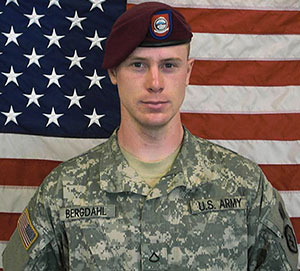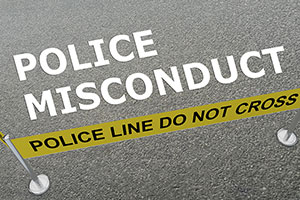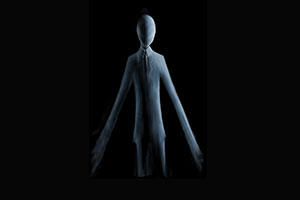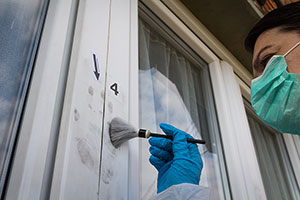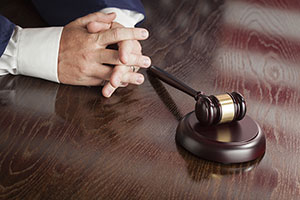The general rule is that juries are allowed to consider reliable expert evidence that will help them decide an issue that is relevant to the case. Deciding whether expert evidence is “reliable” is the question that most often vexes courts. Less often, courts are asked to decide whether expert testimony, reliable or not, would be helpful to the jury.
That issue arose in an appeal that was recently decided by the U.S. Court of Appeals for the Seventh Circuit. Allegations that the police used excessive force are commonly met with expert evidence concerning the training or perception of police officers. That evidence is routinely admitted in typical excessive force cases, but as the Seventh Circuit pointed out, it isn’t always useful.
Facts of the Case
Aldo Brown, a Chicago police officer, entered a convenience store in Chicago’s South Shore neighborhood with another officer to investigate a tip that drugs were being sold from the store. The officers handcuffed several people near the entrance, including store employee Jecque Howard. The officers conducted a fruitless search of the store, then removed the handcuffs from the patrons, all of whom had likely been subjected to an unlawful detention.
Brown’s partner removed Howard’s handcuffs and questioned him. Brown then approached Howard and asked to see his waistband. When Howard lifted his shirt to comply with the request, Brown punched Howard in the face. The sucker punch was captured on the store’s security cameras, so there is little dispute about the facts.
Brown then demanded that Howard empty his pockets. Howard produced a small bag of marijuana from his back pocket. Brown then punched Howard in the ribs and made him lie down in the store aisle. Brown handcuffed Howard, searched him, and found a handgun. He then kicked Howard in the ribs. Howard engaged in no act of aggression to provoke any of Brown’s violent acts.
Apparently unaware that all of his actions had been recorded on camera, Brown wrote two reports that justified his use of force. Brown claimed that his takedown of Howard was necessary because Howard reached for his firearm. The video evidence was inconsistent with that statement. Brown also stated that Howard “fled” or “pulled away” after the takedown. Those alleged actions cannot be seen on the video.
Brown was charged with three federal crimes: two counts of falsifying a police report and one count of violating Howard’s civil rights by using excessive force to arrest or detain him. The jury acquitted Brown of falsifying his report but found him guilty of using excessive force to detain Howard.
Brown’s Proposed Expert Evidence
At trial, Brown testified that he punched Howard because he noticed the gun in Howard’s pocket. He also testified that the confrontation continued because Howard threatened him, incited onlookers to “rough him up,” failed to comply with his orders, tried to grab Brown’s gun, and attempted to flee.
Brown wanted to bolster his defense by calling John Farrell as an excessive force expert. Farrell planned to “take the jury through a frame-by-frame analysis of the surveillance video and describe how the Chicago Police Department’s ‘Use of Force Model’ applied to Brown’s confrontation.” Farrell’s expert report stated that Howard was an “active resister” and an “assailant” as those terms are used in the “Use of Force” policy. Farrell would have testified that the use of force was appropriate under the circumstances. Farrell based his opinions on his own interpretation of the video and on his interview of Brown.
“Use of force” experts are common in police brutality cases, and the technique of conducting a “frame-by-frame” analysis has been successful in other cases. In some cases, slowing down a video and showing individual frames will help jurors see video content that they might miss when the video is running at normal speed. On the other hand, slowing the video might hurt the officer’s defense in some cases, because it makes the encounter seem to have lasted longer than it actually did.
The district court judge decided that Farrell should not be allowed to testify. Brown was convicted of violating Howard’s civil rights. Brown appealed.
“Use of Force” Policies
The question for the jury was whether the officer used more force than was reasonably necessary under the circumstances when the officer detained Howard. The Court of Appeals noted that the police department’s policy does not affect the constitutional standard. In other words, the police cannot thwart the Constitution by implementing a policy that allows the unreasonable use of force.
The court noted that policies differ from department to department, but the Constitution offers the same protections everywhere. The court also noted that if the “reasonableness” of force is determined by a policy, the police would be in charge of determining the meaning of the Constitution. That result would have “horrified” the Framers of the Bill of Rights, because those rights are “too precious to entrust to the discretion of those whose job is the detection of crime and the arrest of criminals.” Courts, not the police, are the final guardians of civil rights.
Exclusion of Expert Evidence
In some cases, expert evidence about policies the police are trained to follow might be relevant. Testimony about training might explain how the police generally evaluate a particular threat. Police training might also explain why certain techniques are used to respond to threats. Expert testimony can be valuable when it focuses on standard practices that are widely implemented by police departments across the country. The Court of Appeals explained that it is less valuable when the expert testifies about the local policies of a particular department, because the jury’s job is to decide how a reasonable police officer would use force, not how a reasonable police officer employed by a specific department would use force.
Expert testimony is also more valuable when it might help the jury understand complex facts. If the officer perceived a threat that the jury might not easily appreciate, expert assistance might guide the jury’s understanding of how a reasonable officer would evaluate the threat.
Applying those principles, the Court of Appeals concluded that the judge correctly excluded Farrell’s expert testimony. The facts were not complex. The jury could see Brown hitting and kicking a motionless man who was not resisting or threatening him. The police department’s policy could not be spun to make those actions reasonable. A frame-by-frame analysis would not have changed what the recording plainly showed, but might have induced the jurors to substitute the expert’s interpretation of the recording for their own. Since the jury could use their common sense to understand what they saw on the recording, the expert testimony might have muddied facts that were crystal clear.
Farrell would also have expressed the opinion that Brown’s actions were reasonable. While experts may testify about the “ultimate fact” that the jury must decide, they are not allowed to tell the jury what verdict they should reach. That distinction is not always easy to apply, but in this case the Court of Appeals decided that the jury was capable of deciding whether Brown acted reasonably without the help of an expert, and that Farrell’s testimony would have done nothing more than tell the jury what result to reach. For that reason, the Court of Appeals concluded that the expert testimony was properly excluded.


